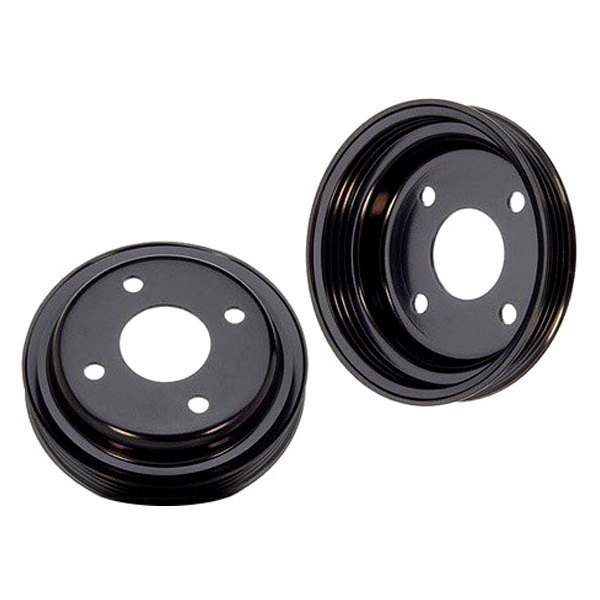

If your engine temperature is running in the "red zone" on your dashboard temperature register, that is an instant sign that a problem exists with the coolant system.

Contact a mechanic to inspect this problem and have them replace the water pump pulley as a precaution. If you can hear a constant grinding sound, close the hood and drive home safely. This sound is very difficult to notice while driving, however if you can hear a grinding sound while the car is idling, pull the car over, pop the hood of your engine and listen closely to the front of your motor. When the bearings wear out, it will create a metal-to-metal grinding sound which is commonly due to lack of lubrication or a faulty bearing. Most of the time, the problem with a water pump pulley is not the pulley itself, but the bearings inside the pulley. Grinding sound from the front of your car If it's discovered that the water pump or serpentine belt is wearing out sooner than it should, it's likely a problem with the water pump pulley.
#COOLANT LEAKING FROM WATER PUMP PULLEY CRACK#
When this occurs, the belts can crack or literally shred as most of these belts are made out of rubber and nylon cords for strength. If the pulley is loose it can cause the water pump belts to shake and develop more heat. Extensive wear on the water pump or serpentine beltĪnother common symptom of a damaged water pump pulley is when you or someone else looking under your vehicle's hood notices extensive wear on the belts that come in contact with the pulley. Contact a local ASE certified mechanic to replace the water pump pulley before it causes significant damage to your vehicle's engine. If one of these technicians tells you that your water pump pulley looks damaged, don't wait for it to fix itself. This symptom is commonly recognized by oil service technicians when they are under your car and changing your engine oil or oil filter. There are multiple ways this metal component can be damaged, including having an incorrect sized or improperly adjusted water pump belt installed, vehicle accidents or problems with the internal bearings that allow the pulley to spin. The most obvious sign that a problem exists with your water pump pulley is if it's physically damaged. There are a few warning signs that you can be aware of that will indicate a problem with your water pump pulley exists. In order to reduce the potential of having your engine overheat or other major mechanical problems developing, having the water pump pulley replaced before it breaks completely is recommended by all mechanics and automotive manufacturers. When the water pump pulley wears out, the pulley will refuse to turn, which results in a water pump that doesn't efficiently circulate water throughout the engine. Most modern cars, trucks, and SUVs use a serpentine belt which routes around the engine, turning pulleys, which operate various accessories including AC systems, and alternators. The water pump on any vehicle uses a system of belts and pulleys to operate. However, one of the more common mechanical parts that can fail sooner than later is the water pump pulley. Typically this system runs for years with routine service and maintenance including replacing fan belts, water pump belts and flushing the radiator fluid. In order to maintain a consistent and safe operating temperature, your vehicle utilizes a coolant system that circulates coolant from the radiator, through the engine block, to a heater core and back to the radiator.


 0 kommentar(er)
0 kommentar(er)
